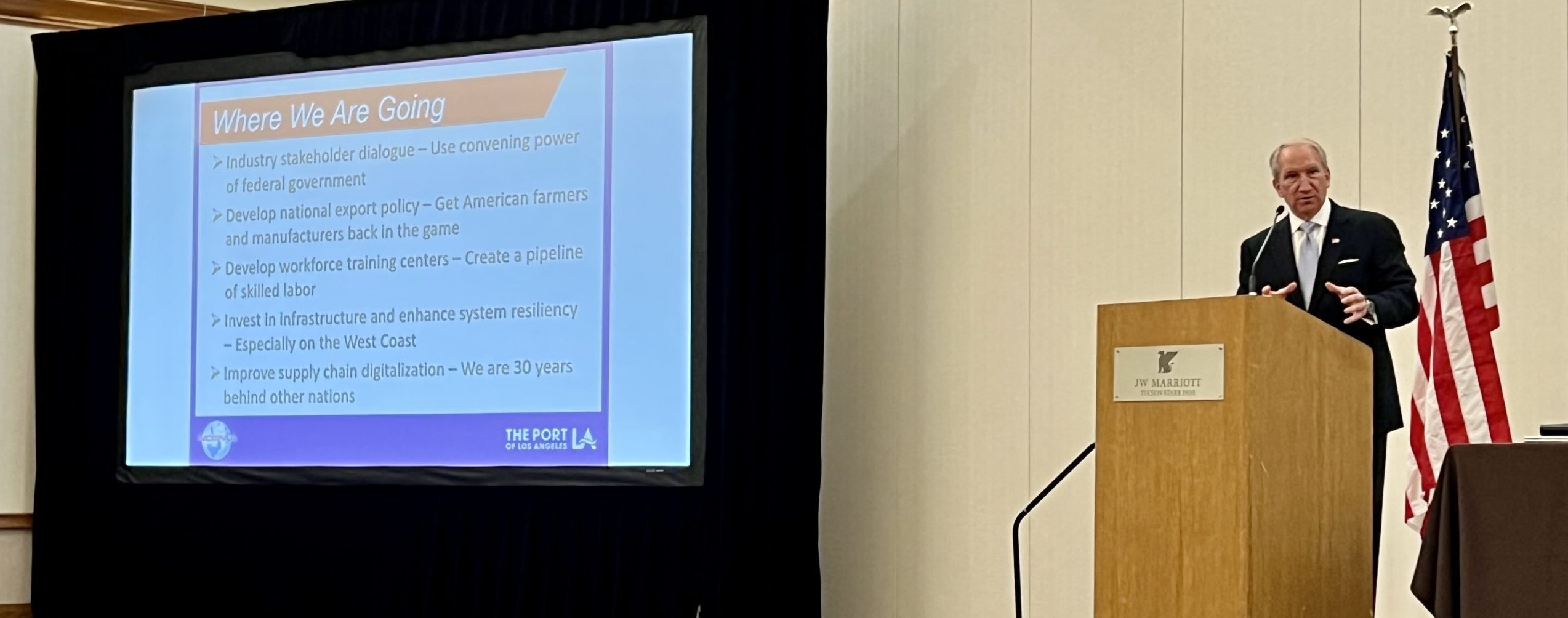
13 May NCBFAA Conference Summary: Regulatory and Transportation Takeaways
Held this year in Tucson, Arizona, the National Customs Brokers and Forwarders Association of America’s (NCBFAA) Annual Conference is our chance to hear from regulators, private sector leaders and chat with our peers to get an accurate accounting as well as some first-hand guidance on the issues that affect our customers. Whether import, export or domestic, the three-day event is key to meet with people face-to-face and get answers to questions that we sometimes cannot lock in from lower-level people within these organizations.
Looking back on the sessions and what we heard, here are a number of key takeaways that we feel will warrant paying attention to heading into the summer and the rest of this year.
Customs issues:
The Uygur Forced Labor Prevention Act comes into law on June 21st and CBP shared with the crowd how furiously they are working to provide guidance, train their officers in the field and aggressively communicate and do outreach to businesses which will be impacted by the law.
Check out CBP’s website for all the details, but know that the date cannot and will not slip because it is prescribed by law. CBP shared that they are currently enforcing 54 active Withhold Release Orders (WRO’s) and 9 active findings across various industries with more to come.
For those of our customers who use our duty drawback services, the agency shared that there is currently $3 billion in claims which have been filed for duty refunds. The drawback offices have also been moved in with CBP’s Centers of Excellence and Expertise (CEE’s) and the changes that have been occurring to the drawback program are the largest since the inception of the program which dates back to 1789.
Fun fact: A drawback claim needs to get through 314 validations before it is accepted.
Port Congestion:
We heard from Gene Seroka, Executive Director of the Port of Los Angeles, Dan Maffei, Chairman of the FMC and Jonathan Gold, Vice President Supply Chain and Customs Policy of the National Retail Federation. Seroka provided background and details on the Dwell Fee which the ports have continued to push out. He said that they looked at the terminals and more than 40% of the containers left on docks were containers which had been there nine days or more. Just the threat of the fee, he shared, led to a drop of 75% of containers of that duration.
Maffei used a great analogy about port congestion, likening it to plumbing. “If your sink clogs you call a plumber. You don’t call a plumber because you’re trying to stuff twice as much water in the sink and it clogs up.”
He cautioned that more cargo is moving earlier – back to school is shipping and arriving now – because retailers don’t want to be caught without inventory. This will only contribute to the problems, but while Seroka cited only a 53% appointment utilization rate, the crowd and FMC were quick to point out that this figure was artificially constrained by terminal return restrictions, chassis availability (or lack thereof) and the delays in making turns that truckers rely on because they’re paid by the trip.
Demurrage and Detention
While the ALJ’s decision in the Hapag Lloyd case had been announced by the conference, it was nearly matched just days afterwards by the $850,000 settlement with Wan Hai. This and the current conditions for exporters have led the FMC to take a much deeper look at what is happening. Maffei pointed out the changes that have happened in containerized shipping since ocean shipping was deregulated in 1984, including ship sizes going from 5,000 TEU’s to now 25,000 TEU’s, from more than 24 carriers (including US flagged carriers) operating on the transpacific to now less than 10 – with no US carriers remaining.
The Commission, Maffei shared, does this with a budget of about $30 million annually and a staff of only 120 nationwide. But Congress is taking note and will likely increase the budget, allowing for more staff and affording them the opportunity to beef up their consumer affairs and enforcement bureaus.




No Comments